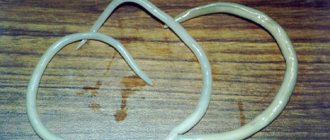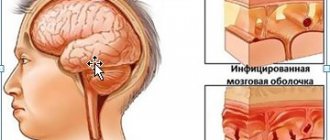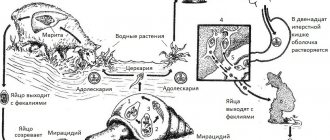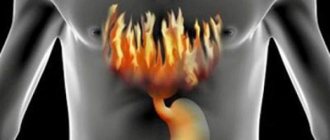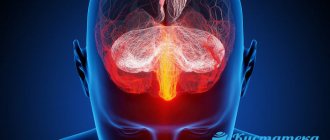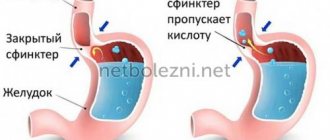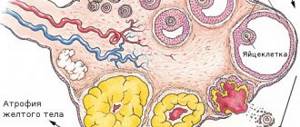Tubootitis is an inflammatory phenomenon that forms in the Eustachian canals and tympanic septa. The disease is accompanied by a narrowing of the passage of the tympanopharyngeal tube and a deterioration in air permeability . In this case, inflammation can spread to the area between the outer and inner ear and cause otitis media. The pathological process in the middle ear and auditory canal is also called salpingo-otitis; eustachitis is considered its beginning. Treatment is aimed at eliminating the symptoms of the disease, suppressing the infection and involves a combined approach.
Inflammation of the auditory tube
Inflammation of the Eustachian tube spreads to several areas of the auditory canal.
The middle ear often comes under attack, which results in a number of anomalies characterized by unpleasant pain syndromes, hearing loss and general malaise. At first, the patient may not feel the presence of inflammation, since with an infectious disease it progresses quite slowly.
However, this type of illness is not as harmless as it seems. Timely diagnosis and treatment are incredibly important. Advanced inflammation of the auditory tube can lead to tissue destruction, that is, necrosis.
Structure of the inner ear
Treatment of chronic eustachitis
Therapy for the chronic form of tubootitis includes a number of complex measures:
- To eliminate the microbial flora, the source of infection is sanitized (local rinsing of the auditory tube with aseptic solutions, insufflation of medications, instillation of drops or irrigation with sprays), a course of antibiotics (from 7 to 14 days);
- to reduce swelling and redness of the mucous membrane, vasoconstrictor drops (Sanorin, Naphthyzin, Ximelin) and (or) antihistamines (Suprastin, Diazolin, Tavegil) are used;
- to reduce inflammation in the middle ear, glucocorticosteroids (Prednisodon, Hydrocortisone) and antimicrobial nasal drops (Dancil, Sofradex, Polydexa) are used;
- to restore normal patency of the Eustachian tube, its blowing or catheterization, pneumomassage are prescribed;
- for resorption of scars, adhesions and adhesions, biostimulants (Aloe, Phibs) and physical procedures (electrophoresis, magnetic and laser therapy, UHF, ultrasound) are used;
- To increase the body's defenses and strengthen them, immunomodulators and vitamin supplements are prescribed.
Causes
Most often, inflammation of the auditory tube occurs due to infection with streptococci and staphylococci. But at an earlier age, the cause of inflammation is often pneumococcal bacteria, as well as various viral infections.
They tend to pass into the middle ear through the Eustachian tube. In this case, the patency of the pipe deteriorates significantly, which creates a favorable environment for the development and activation of pathogenic microorganisms.
The likelihood of a symptom occurring increases significantly if a person has a predisposition to allergic edema, as well as an increased volume of secretory secretions. There are a number of other reasons for the development of inflammation:
- Adenoids (especially in children) and nasopharyngeal tumors;
- Frequent and prolonged nasopharyngeal infections;
- Defects of the nasal septum;
- Atmospheric pressure surges.
Symptoms and signs
Symptoms directly depend on the form of the disease. Inflammation of the auditory tube is divided into:
- Chronic;
- Spicy;
- Allergic.
The acute form most often occurs due to viral diseases, colds, which primarily affect the upper respiratory tract. In the acute form, the patient feels stable. The temperature rarely rises above 38 degrees, and the pain is of mild intensity. Most often, a person complains of signs of inflammation such as:
- Congestion in the ear;
- Incessant noise;
- Significant hearing impairment;
- A clearer perception of your own voice during speech;
- Nasal congestion, similar to a runny nose.
During examination, the lumen of the auditory tube is significantly narrowed, swelling is noticeable.
The chronic form has the following symptoms:
- Deformation of the eardrum, its stretching;
- Hearing impairment;
- Narrowing and blockage of the lumen of the auditory tube;
- Partial redness in some places.
Diagnosis of the form and stage of the disease is possible only through diagnostics. A negative factor is the persistence of symptoms in the chronic form of inflammation. The pain syndrome may also be constant.
Chronic inflammation is characterized by atrophy of the mucous membrane and tympanic cavity. The membrane itself becomes cloudy over time. Additionally, parts of dead tissue may appear, that is, necrosis.
Children have a different shape of the auditory tube: it is shorter than that of any adult. This explains the greater predisposition to the occurrence of ear diseases and corresponding symptoms. However, all the signs of inflammation of the auditory tube in a child are similar to the signs that occur in older people.
A distinctive feature is the normalization of hearing when yawning or coughing. Since the pain syndrome is very mild and the symptoms are general, it is impossible to diagnose inflammation of the auditory tube on your own. The only solution is to go to a specialist. Only a qualified otolaryngologist can give an opinion.
As for the allergic form, it occurs as a result of the body’s reaction to an irritant. Accompanied by symptoms such as nasal congestion and runny nose, lacrimation. Pain is almost never annoying, but a slight rise in temperature is possible.
Differences in the structure of the Eustachian tube in adults and children
What diseases does it occur in?
The symptom occurs when inflammation spreads to the mucous membrane of the tube. The inflammation itself moves from the nasopharynx area, as a result of acute and chronic forms of pharyngitis, sore throat or rhinitis.
Both acute and chronic inflammation can lead to otitis media. But the following reasons can accompany the occurrence of inflammation:
- Adenoids;
- Choanal polyps;
- Hypertrophy of the inferior (nasal) concha;
- Deviation of the nasal septum;
- Sinusitis;
- Sinusitis.
Varieties
Among other things, the course of the disease can be divided into several stages. Each of them has a specific histological picture and characteristics of the condition of the mucous membrane.
The first stage is characterized by the formation of transudate in the area of the eardrum with a slight inclusion of mucus. In addition, an increase in the surface epithelium is observed. At the same time, the number of mucous glands increases significantly.
At the second stage, the clinical picture changes slightly and looks like this: most of the mucous membranes in the tympanic cavity produce specific mucus. In relation to other products at the cellular level, the formation of the so-called adhesive ear occurs.
The third stage of chronic tubootitis (according to ICD-10 - H 66.2) is characterized by a decrease in the amount of exudate, but the mucus that has already accumulated by that time acquires greater viscosity. Against the background of this phenomenon, the adhesive process begins. This is what becomes the prerequisite for closing the tympanic cavity.
Against the background of thinning of the membrane, it is greatly stretched. As a result, it becomes even thinner, more flabby and almost invisible, and atrophy gradually develops. Returning the membrane to the lumen of the ear canal at this stage is only possible with the help of blowing.
With prolonged obstruction of patency, an adhesive process is formed in the tympanic cavity.
How to treat
Treatment of the problem begins only after visiting a doctor. So, after collecting an anamnesis and receiving the results of the prescribed tests, the degree of inflammation and its neglect is determined. Based on such data, the doctor prescribes the necessary treatment plan and makes a prognosis.
It has been repeatedly verified that after timely and high-quality treatment, recovery occurs in 100 percent.
How to treat inflammation of the auditory tube:
Medication
Drugs are always prescribed on an individual basis. Despite the fact that doctors focus on medications, they do not refuse physical therapy, which involves compresses made with liquid antibiotics. They perfectly relieve inflammation and speed up recovery.
Most often, for inflammation of the auditory tube, drugs from a number of vasoconstrictors are prescribed. They help normalize the mucous membranes of the Eustachian tube, nasopharynx and, of course, the nose. Among these drugs are:
- Oxymetazoline;
- Naphazoline;
- Nazol;
- Naphthyzin;
- Xylometazoline.
The products can be purchased at the pharmacy even without a doctor's prescription. However, you should not make prescriptions yourself, even if you have previously read many sources and are convinced that you have this particular problem.
Folk remedies
As for folk remedies, everything is relative. Without informing the doctor, additional medications cannot be administered, even if they are made on the basis of purely natural ingredients.
The best option is to use compresses and some types of tinctures. Purely folk methods cannot treat eustachitis and other diseases of the ear canal; they can only alleviate the symptoms.
Compresses and infusions made on the basis of:
- Chamomile;
- Blueberry;
- Celandine;
- Lavender;
- Mint;
- St. John's wort;
- Nettle;
- Immortelle;
- Sweet clover;
- Burdock;
- Anise;
- Kalina.
It should be noted that taking infusions perfectly strengthens the immune system, which has a beneficial effect on preventing the disease in the future.
Folk recipes
Along with conservative treatment, folk remedies work well.
Herbal decoctions
To prepare a healing infusion, you need to take a mixture of herbs from lavender, eucalyptus, yarrow and celandine. Two tablespoons of medicinal herbs are poured into 500 ml of boiling water and left to infuse overnight. The next day, take the infusion three times a day, a quarter of a glass.
Onion juice and aloe
Onion juice is instilled into the nasal cavity, and a heated warm onion is placed in the ear itself before going to bed. Onion juice can be diluted with water so as not to cause a burn to the nasal mucosa. The juice of the medicinal aloe plant, diluted half with saline, is also instilled into the ears. The instillation procedure is performed three times a day.
Milk for treatment
Add one drop of iodine solution per glass to heated milk and take this remedy once a day, adding one more drop of iodine to the milk each time. This treatment is carried out for ten days, and then the number of drops is gradually reduced from ten to one.
What is possible and what is not
In case of inflammation of the auditory tube, in no case should you resort to self-medication by using “proven” grandmother’s techniques. If you feel pain in the ear canal, do not rush to resort to the traditional method, which consists of methodically heating the painful area. This may lead to the progression of the inflammatory process and an increase in the number of bacteria.
When treating the disease, you can use combination treatment, namely the use of medications, physiotherapy and folk remedies. It is also useful to diversify your diet during treatment in order to quickly strengthen the immune system.
Popular video about diseases of the auditory tube:
Diagnostics
When making a diagnosis, taking an anamnesis plays a decisive role.
When interviewing a patient, the doctor finds out whether the person has recently suffered from respiratory or infectious diseases. An otoscopy is performed, thanks to which you can see a retracted membrane with inflamed capillaries. To clarify the diagnosis, the following examination methods may be recommended:
- Bacterial culture from the ear to identify the causative agent of the disease.
- Microotoscopy.
- Allergy tests.
- Ear manometry and audiometry.
- Pharyngoscopy.
- CT scan.
To determine the degree of inflammation in the body, the patient undergoes a clinical blood test. The level of leukocytes and ESR can determine how acute the disease is.
Prevention
Preventive measures can significantly reduce the risk of recurrent disease. To do this, you must follow these recommendations:
- Pay due attention to health;
- Treat colds and infectious diseases in a timely manner;
- Do not overcool;
- Dress according to the season;
- To live an active lifestyle;
- Contact a doctor promptly if you feel unwell.
It is much easier to prevent a disease than to fully treat it in the future. Therefore, by following simple rules, it is enough to simply avoid such an unpleasant illness as inflammation of the auditory tube.


